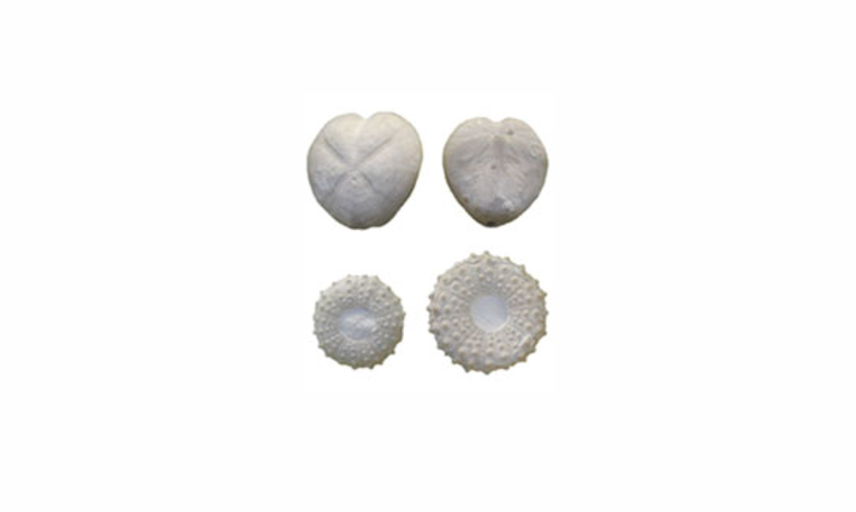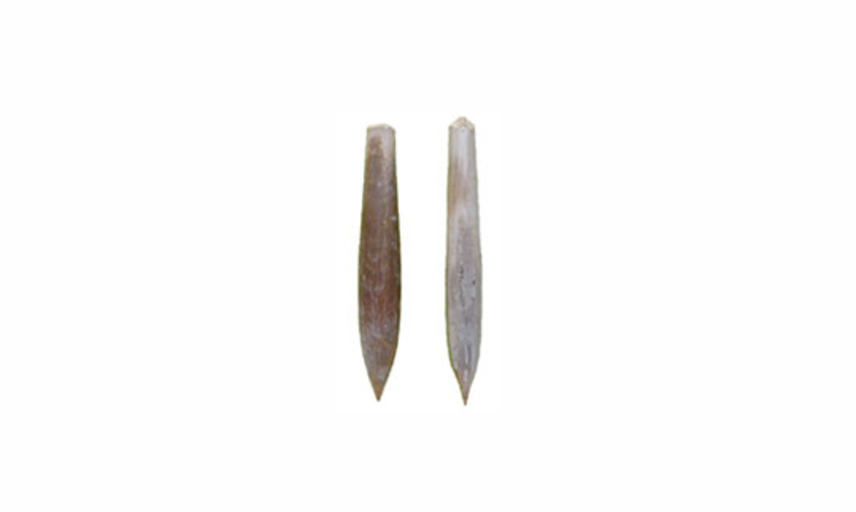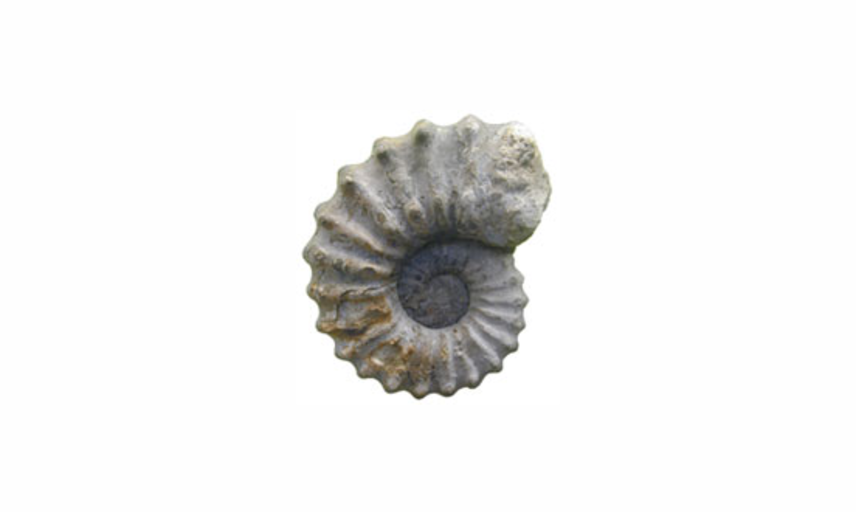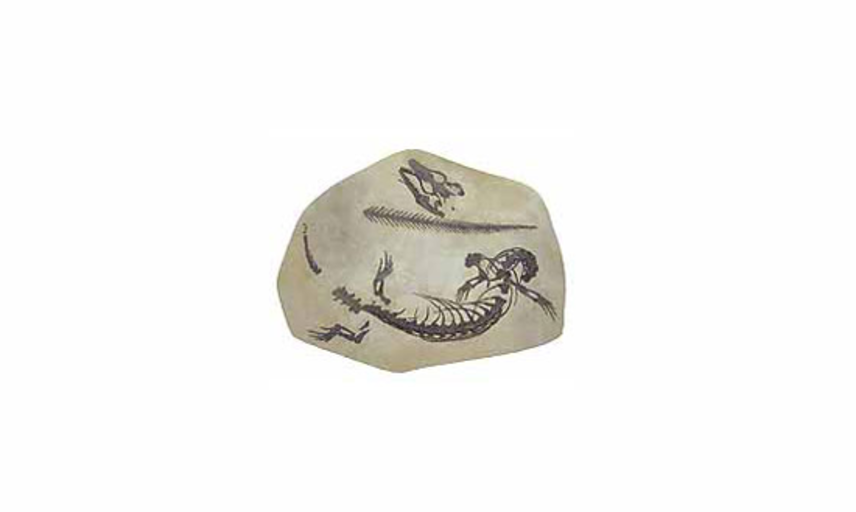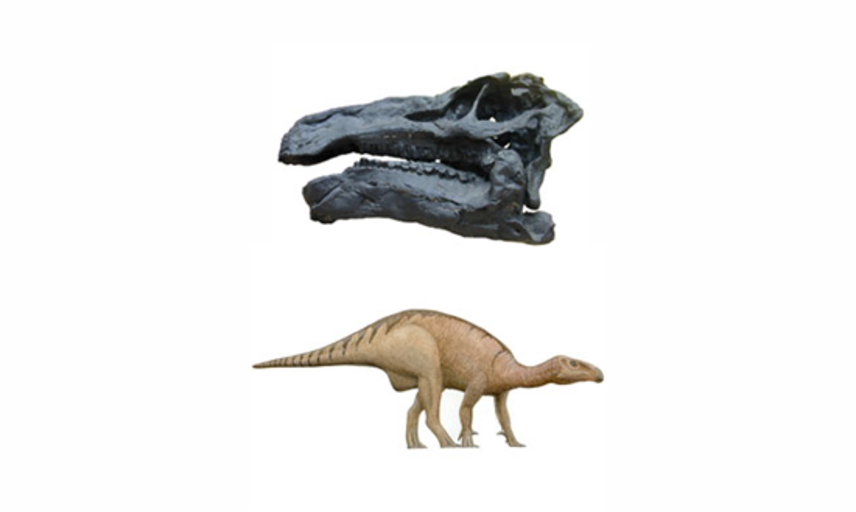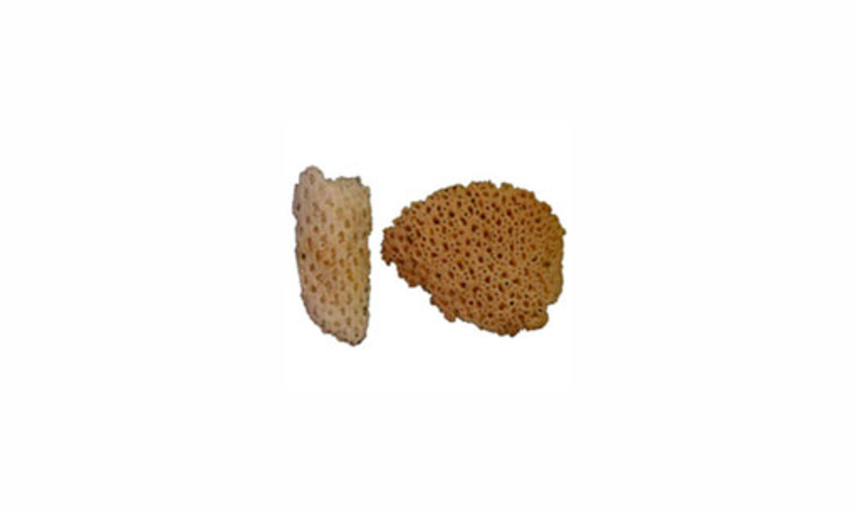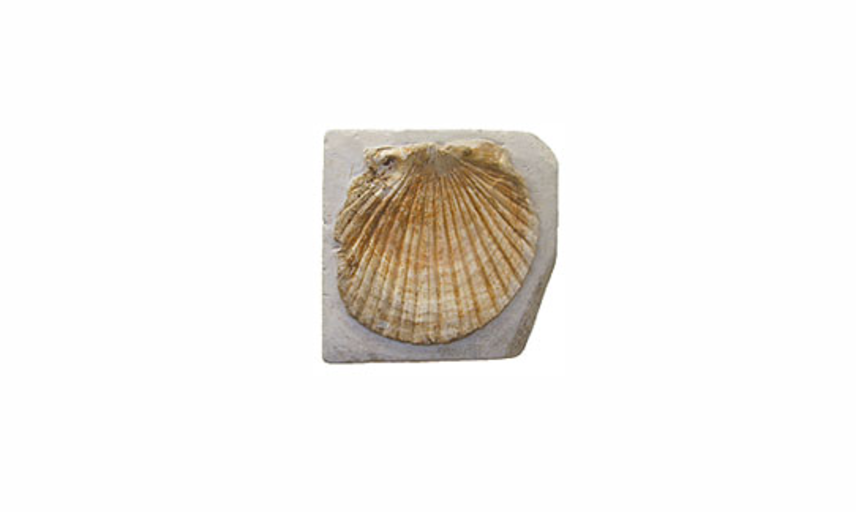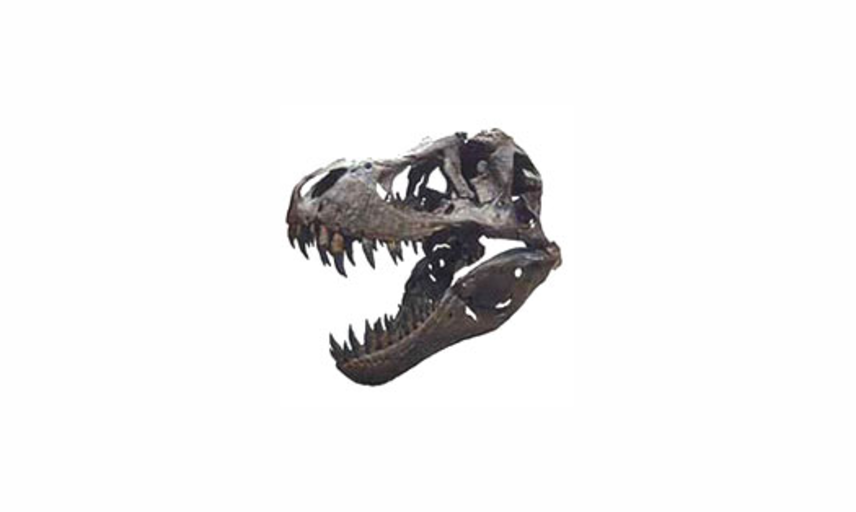The Cretaceous
When: 144 to 65 million years ago.
Animals: Reptiles still dominate land, sea and air. Dinosaurs - like Tyrannosaurus rex, Iguanodon and Triceratops - are common; pterosaurs fly in the skies; mososaurs and other marine reptiles swim in the oceans. Echinoderms (starfish snd sea urchins) and molluscs - like snails, bivalves, ammonites and belemnites also live in the oceans.
Plants: Flowering plants become much more common.
Firsts: Bees pollinate flowers for the first time.
Lasts: Many groups died out at the end of the Cretaceous. Ammonites, dinosaurs and many other reptiles became extinct.
Notes: Scientists think that an asteroid hit the earth at the end of the Cretaceous, causing the extinction of the dinosaurs and other groups.
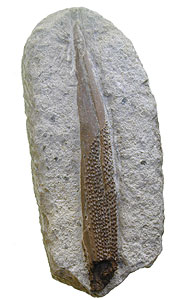
This fossil is a fin spine from a shark that lived in the sea about 140 million years ago. This specimen was found near Swanage in Dorset.
Sharks' skeletons are not made from bone and do not fossilize well, but you can find their fin spines and teeth more easily.
Do you know what these fossils are?
About this resource
Science topic: Fossils, Rocks, Evolution
Key Stage: KS2
Type: Information, Activity
Keywords: Cretaceous, ammonites, dinosaurs, dinosaurs extinction, first flowering plants, Cretaceous fossils, extinction

